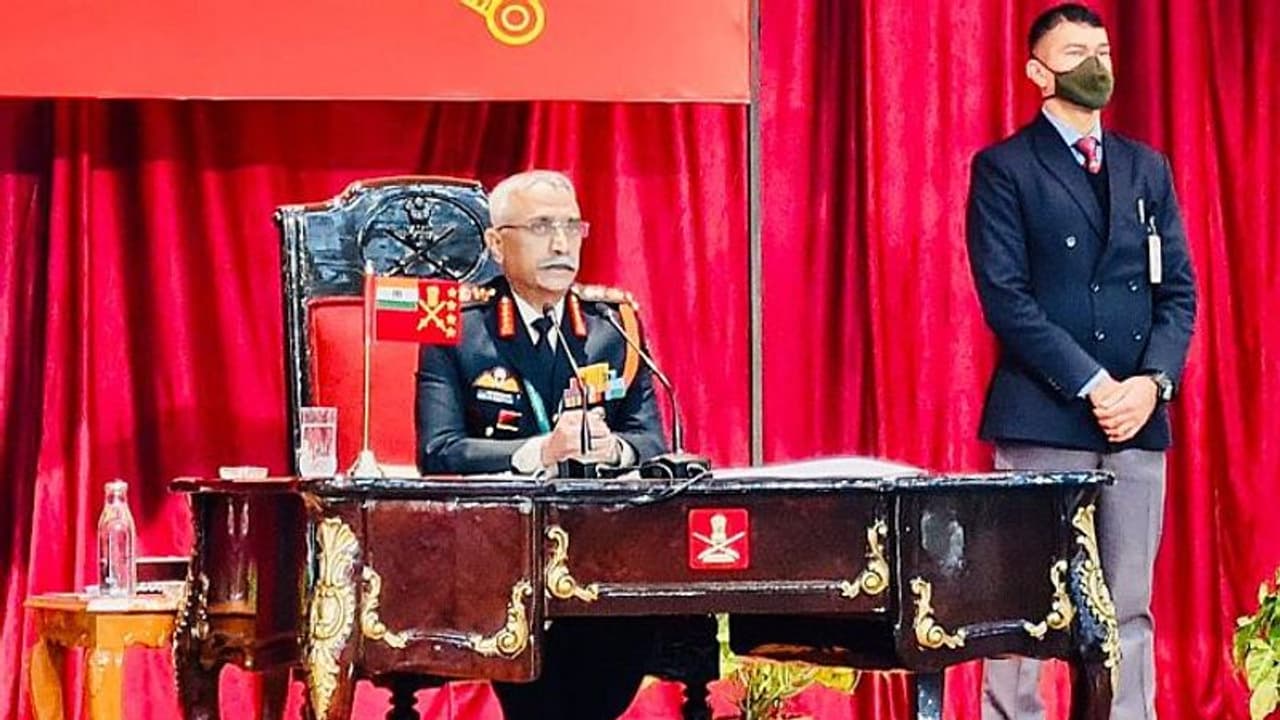Expressing hope for a positive and amicable solution to the border standoff with China in eastern Ladakh, Indian Army chief Gen MM Naravane has said that the Army was rebalancing towards the northern borders. Anish Singh reports
Expressing hope for a positive and amicable solution to the border standoff with China in eastern Ladakh, Indian Army chief Gen MM Naravane has said that the Army was rebalancing towards the northern borders.

Addressing the annual Army Day press conference in New Delhi, General Naravane said, "The army is ready to tackle any challenges as the operational preparedness is of a high order."
India-China standoff in eastern Ladakh
In reply to a question on a mobilisation by PLA in May 2020, the Army chief said, "Mobilisation from Chinese side was nothing new as they conduct annual training. We were aware of their presence. But we had not guessed of such movement."
"They had the first-mover advantage in May, and we had the first-mover advantage in August," he added.
In August, the Indian Army had captured 30 dominating heights and other such terrains in the Ridge area on the southern bank of the Pangong lake in eastern Ladakh.
The heights include the Rezang La and Reqin La, both dominating the Spanggur Gap and covering Patrol Points 27 to 31.
They also include the dominating heights of Black Top, Hanan, Helmet, Gurung Hill, Gorkha Hill and Magar Hill among others.
Ongoing situation in eastern Ladakh
Gen Naravane said, "Situation is same in eastern Ladakh. We are keeping vigil on the entire northern border. There are no eyeballs in the eastern and central sector, but there are frictions. We factor in everything when we make a new strategy and planning."
He also said there was a need for restructuring and enhanced capabilities.
"As far as capability development is concerned, all-around development has taken place. We have signed a number of contracts ranging from weapons to cloth and gear to infantry, communication, engineering systems... it has been all-around development and each arm and services have got what they need," he said.
So far eight rounds of military talks and several rounds of diplomatic talks have been held to resolve to standoff find but nothing concrete has happened.
He also said over 85 per cent of contracts have been awarded to Indian companies as part of indigenisation and Prime Minister's Atmanirbhar Bharat initiative.
On waging a two-front war
On the potential of the two-front war, he said Pakistan and China form a potent collusive threat, and the threat of collusivity cannot be wished away.
The troops of two Himalayan giants have been engaged in a military standoff in eastern Ladakh since May 2020.
On Pakistan
The Army chief said Pakistan continued to embrace terror activities and terrorism as a state policy.
"We have zero tolerance for terror, and we reserve the right to respond at the place and time of our choosing and with precision," he said.
On Tech-enabled force
"The Army is in the middle of restructuring and is transforming from manpower to technology-intensive force, and we are looking at blockchain, big data, artificial intelligence and quantum computing. We are fully committed to various integrated commands. We will calibrate for a smooth transition," he said.
On farmland use
He said land surplus like those from the soon-to-be-closed military farms would be used to seek infrastructure of equal value.
On USI report on depression level among forces
Delhi-based National security and defence services think tank United Service Institution of India (USI) in its study mentioned that the Army lost more personnel every year due to suicides, fratricides and untoward incidents than in response to the enemy or terrorist activities.
Gen Naravane said the report was not based on adequate sample size. On a lighter note, the chief said, "Even I am under stress."
"They had only 400 samples; to get 99 per cent accuracy, the sample size should have been 19,000. A small sample size cannot be seen as increased stress," the chief added.
